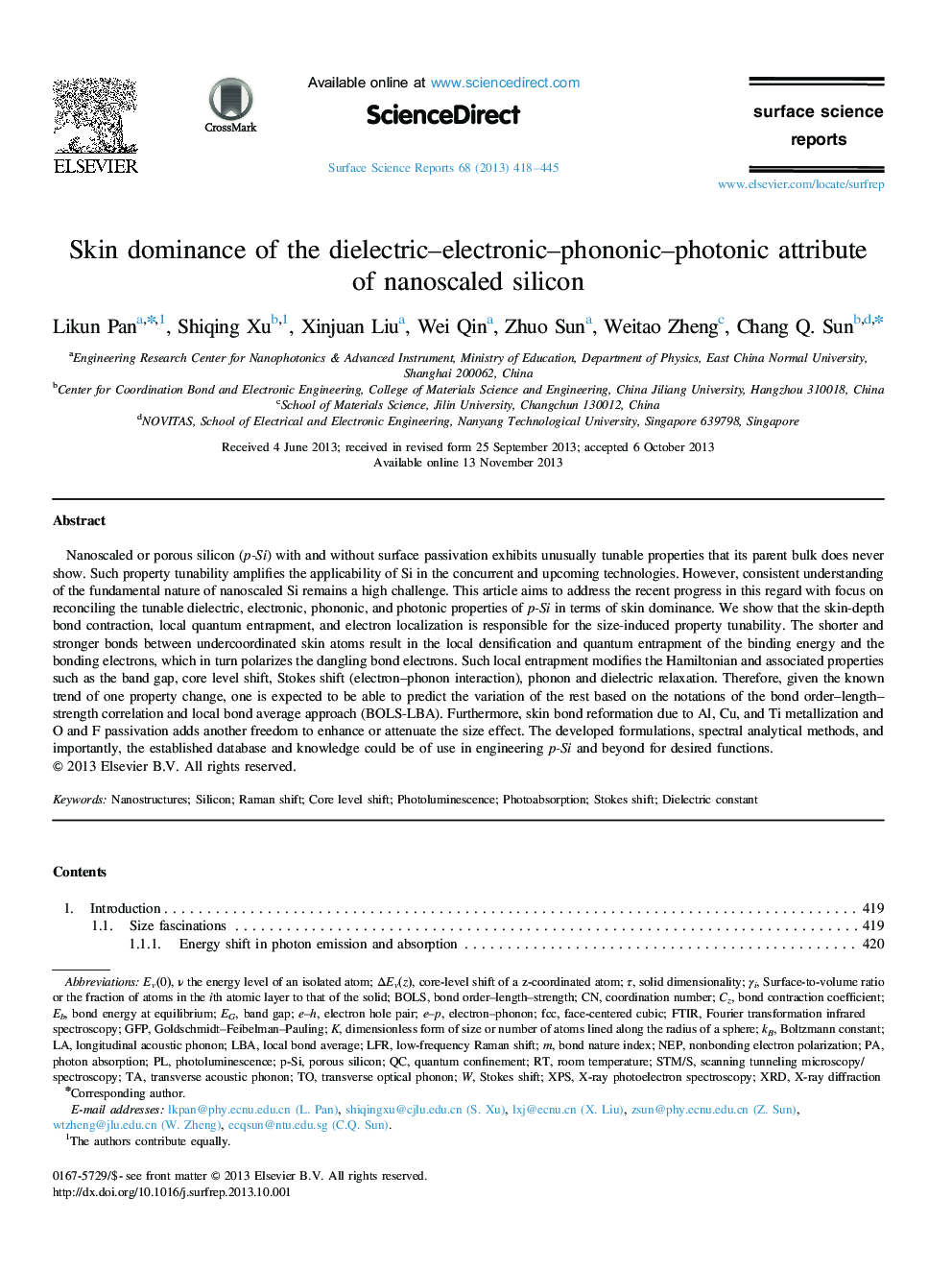| Article ID | Journal | Published Year | Pages | File Type |
|---|---|---|---|---|
| 7845168 | Surface Science Reports | 2013 | 28 Pages |
Abstract
Nanoscaled or porous silicon (p-Si) with and without surface passivation exhibits unusually tunable properties that its parent bulk does never show. Such property tunability amplifies the applicability of Si in the concurrent and upcoming technologies. However, consistent understanding of the fundamental nature of nanoscaled Si remains a high challenge. This article aims to address the recent progress in this regard with focus on reconciling the tunable dielectric, electronic, phononic, and photonic properties of p-Si in terms of skin dominance. We show that the skin-depth bond contraction, local quantum entrapment, and electron localization is responsible for the size-induced property tunability. The shorter and stronger bonds between undercoordinated skin atoms result in the local densification and quantum entrapment of the binding energy and the bonding electrons, which in turn polarizes the dangling bond electrons. Such local entrapment modifies the Hamiltonian and associated properties such as the band gap, core level shift, Stokes shift (electron-phonon interaction), phonon and dielectric relaxation. Therefore, given the known trend of one property change, one is expected to be able to predict the variation of the rest based on the notations of the bond order-length-strength correlation and local bond average approach (BOLS-LBA). Furthermore, skin bond reformation due to Al, Cu, and Ti metallization and O and F passivation adds another freedom to enhance or attenuate the size effect. The developed formulations, spectral analytical methods, and importantly, the established database and knowledge could be of use in engineering p-Si and beyond for desired functions.
Keywords
Related Topics
Physical Sciences and Engineering
Chemistry
Physical and Theoretical Chemistry
Authors
Likun Pan, Shiqing Xu, Xinjuan Liu, Wei Qin, Zhuo Sun, Weitao Zheng, Chang Q. Sun,
